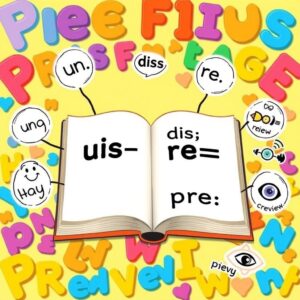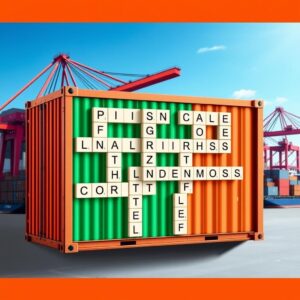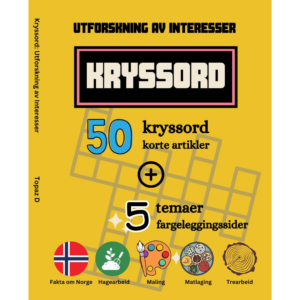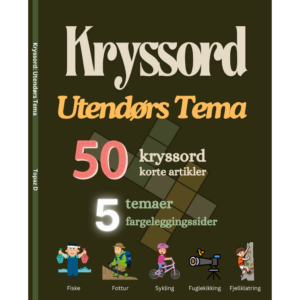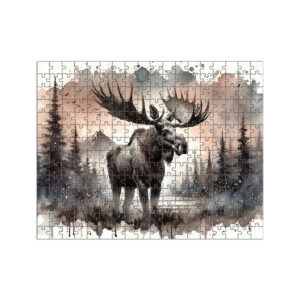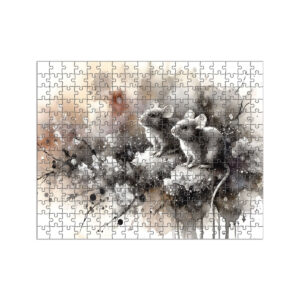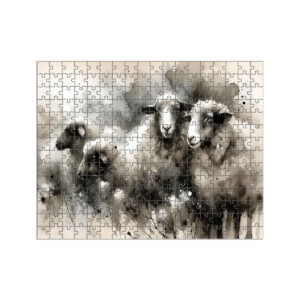
Explore & Play
Discover interesting topics and solve the accompanying crossword puzzle.
Edge Crossword: Boundaries and Puzzle Design Insights
Table of Contents
Edge Crossword
You can either fill in the crossword puzzle directly on this page or click the button in the bottom right corner to print it for free.
——————————————
Exploring the Edge Crossword: Boundaries, Clues, and Puzzle Design Insights

Introduction
Crossword puzzles often play with edges—both as real grid boundaries and as themes in clues. The “edge” can mean the outer rim of the puzzle, the limit of a word’s meaning, or even a sharp advantage in solving. It’s a simple idea with many layers.
Why focus on edges? Because they shape how puzzles look and feel. Borders guide the solver’s eye and create space for ideas. Edges also inspire clever clues that tease the line between literal and figurative.
This article takes a clear look at how the concept of “edge” influences puzzle design and clue writing. We’ll explore standout puzzles, common patterns in clues, and ways to crack tricky edge-themed answers. The goal: to give you a fresh perspective and useful insights for your next solve.

The Role of Boundaries in Crossword Puzzle Design
Boundaries shape every crossword’s form and feel. From the grid itself to the placement of clues, edges set limits—and those limits create challenge. Most puzzles stick to a standard shape, often a 15×15 grid. It’s familiar and balanced, like a well-worn path. But when designers push beyond, the puzzle shifts.
Take the 2025 New York Times crossword that expanded to 16 columns wide. This wasn’t just a bigger grid for show. It allowed for theme answers stretching 22 letters—answers that wouldn’t fit otherwise. That extra column gave space for bold ideas. It changed how solvers approached the puzzle. Longer entries placed near the edges required more patience and careful letter checks. The wider grid tested focus without overwhelming. More space, more room to think.
Boundaries also influence clue placement. Designers often cluster thematic clues near the grid’s outer edges. This tactic creates pockets of difficulty right where solvers might expect easier fill—turning those edges into strategic battlegrounds. It slows the pace just enough to keep you engaged, nudging you to rethink assumptions.
Experts call this deliberate “tightening” around the periphery. It challenges solvers to use the puzzle’s frame as more than just a border. The edge becomes part of the game itself—where clues don’t just sit but tease, pushing minds toward new patterns.
In short, boundaries in crossword design aren’t just limits; they’re tools. They guide the solver’s journey, shape difficulty, and add subtle depth. When used thoughtfully, edges make puzzles feel spacious and restrained at once—clean, focused, and quietly clever.

Popular Edge and Boundary Clues in Crosswords
Edges show up often in crosswords, usually as short answers like RIM, LIMIT, END, or BRIM. These words are compact but carry weight—each one points to a boundary, literal or figurative. For example, RIM might clue the edge of a cup, while LIMIT signals a boundary you can’t cross. These familiar answers give solvers quick footholds near tricky clues.
Clues for these words tend to be straightforward, such as “Cup’s border” for RIM or “Maximum point” for LIMIT. But setters often blur the line between literal and figurative meanings. Take VERGE, which can mean a roadside edge or a state just before something happens—this double meaning invites solvers to think beyond the obvious.
Wordplay adds another layer. Clue writers like to misdirect by combining edge terms with puns or idioms. For instance, a clue like “Fringe benefit?” might mislead you into thinking about perks, but it actually points to FRINGE—the perimeter of a fabric or area. These subtle twists keep solvers on their toes.
When facing edge-related clues, start with the common short answers. If the clue hints at a boundary but also feels offbeat, consider whether the setter is playing with figurative meanings or puns. This approach trims down options and keeps your solving process clean and efficient.
In short, edges in crosswords aren’t just the borders of words but gateways to clever misdirection and layered meanings. Recognizing how clue makers use these boundary terms will sharpen your solving instincts and make every edge your friend.

Notable Crosswords Featuring Edge Themes
Some puzzles stand out by pushing boundary concepts to the forefront. They don’t just mention edges — they build entire puzzles around them.
2025 NYT Crossword Puzzles
One memorable example came on April 13, 2025. The New York Times expanded its usual grid by one column to fit theme answers stretching 22 letters each. This extra width wasn’t just for show; it let the puzzle embrace the idea of edges literally — stretching words across the grid’s border. Boundary-related answers were cleverly woven throughout, reinforcing the “edge” motif without feeling forced. Solvers appreciated the fresh challenge. Critics called it elegant: a puzzle that looks simple but plays on the limits of structure and language at once.
NYT “Connections” Puzzle from March 5, 2025
This puzzle took a different angle on edges. Instead of focusing on grid design, it grouped words like PERIPHERY, EDGE, and FRINGE in connected sets. This thematic grouping made these boundary terms more than just answers—they became a part of a larger thought process. It asked solvers to think around the idea of borders and limits, turning the puzzle into a quiet meditation on what it means to be on the outside looking in. The result? A richer, deeper engagement that felt both subtle and satisfying.
NYT Mini Crossword and Boundary Constraints
Small puzzles often face their own limits, and the 5×5 mini crossword is a perfect example. With so little space, every clue counts — especially those about edges. These compact grids highlight boundary clues in a focused way, making them quick but meaningful tests of solver skill. The mini’s tight design contrasts with full-size crosswords but proves that even constrained spaces can explore edge themes effectively.
These puzzles remind us: edges are never just lines. They’re places of transition, tension, and opportunity in puzzle design. And in every form — large or small — they offer a space to rethink boundaries creatively.

Solver Strategies for Tackling Edge and Boundary Clues
When you see an edge or boundary clue, your first step is to pause and consider the clue’s tone. Is it pointing to a physical limit—like the rim of a cup or a border around a map? Or is it hinting at something more abstract, such as a metaphorical edge, like having the “upper hand” or pushing a limit? Taking this simple moment to decide helps keep your solving focused.
For tricky clues that play with words, break the clue into parts. Many edge-related answers are short and common—RIM, END, LIMIT, VERGE. Start there. If the clue feels like it’s twisting the meaning, think about synonyms that fit the theme but might surprise you. For example, BRIM can mean the edge of a hat, but clues might use it figuratively. Keep a mental list of these staples; they act as reliable anchors amid wordplay.
Don’t hesitate to use external tools when stuck. A quick look at a thesaurus can reveal fresh angle words like PERIPHERY or FRINGE. Online crossword solvers aren’t cheats—they’re references that expand your vocabulary and catch slipping patterns. Forums and hint sites also offer subtle hints without outright answers, making tough edges easier to face.
In short: read clues calmly, lean on common short answers first, and use trusted resources when needed. Edges are tricky when you rush them, but patient focus turns them into simple, welcome boundaries to cross.

Conclusion
Edges shape more than just puzzle grids—they shape how we think through puzzles. By weaving boundaries into design and clues, setters add layers of meaning and challenge. The edge isn’t just a line; it’s a space where creativity meets constraint.
For solvers, these themes invite a sharper eye and a patient mind. Recognize when a clue points to a literal border and when it hints at something more abstract. Use familiar short answers like RIM or LIMIT to anchor your guesses. Don’t hesitate to lean on trustworthy resources if a boundary concept feels slippery.
Try seeking out edge-themed puzzles next time. Notice how these subtle limits push you to slow down and appreciate language differently. Each solve becomes not just a game, but a quiet lesson in boundaries—their hold and their freedom.
Edges endure because they are simple—and endlessly inspiring. They remind us that sometimes, less is more.
Share to...
I hope you enjoy the content.
Want to receive our daily crossword puzzle or article? Subscribe!
You may also be interested in
Share to…
Want to receive our daily crossword puzzle?
-
Jigsaw Puzzles
Majestic Moose in Forest Watercolor Jigsaw Puzzle 250 | 300 | 500 Brikker
kr 348,00 – kr 439,00Price range: kr 348,00 through kr 439,00 Select options This product has multiple variants. The options may be chosen on the product page -
Jigsaw Puzzles
Twelve Zodiac Mice Ink Wash Jigsaw Puzzle 250 | 300 | 500 Pieces
kr 348,00 – kr 439,00Price range: kr 348,00 through kr 439,00 Select options This product has multiple variants. The options may be chosen on the product page -
Jigsaw Puzzles
Enchanting Four Sheep Zodiac Jigsaw Puzzle 250 | 300 | 500 Pieces
kr 348,00 – kr 439,00Price range: kr 348,00 through kr 439,00 Select options This product has multiple variants. The options may be chosen on the product page
